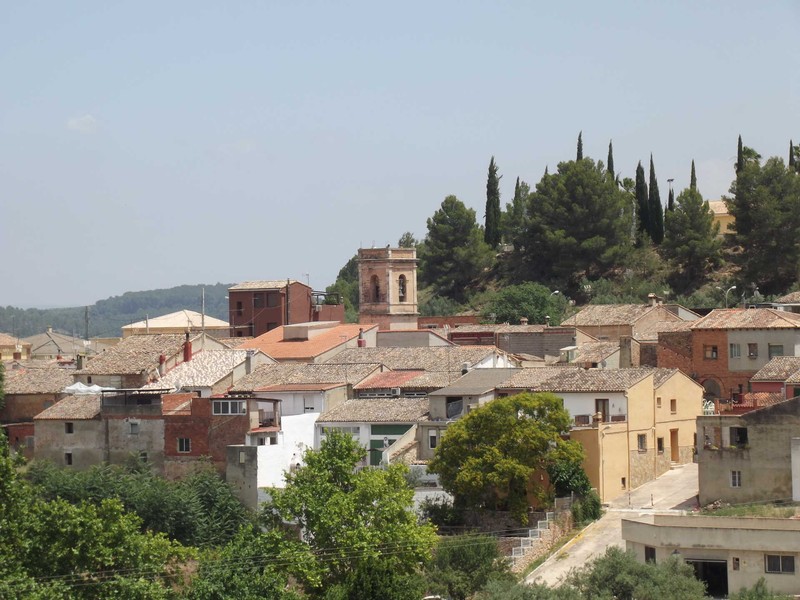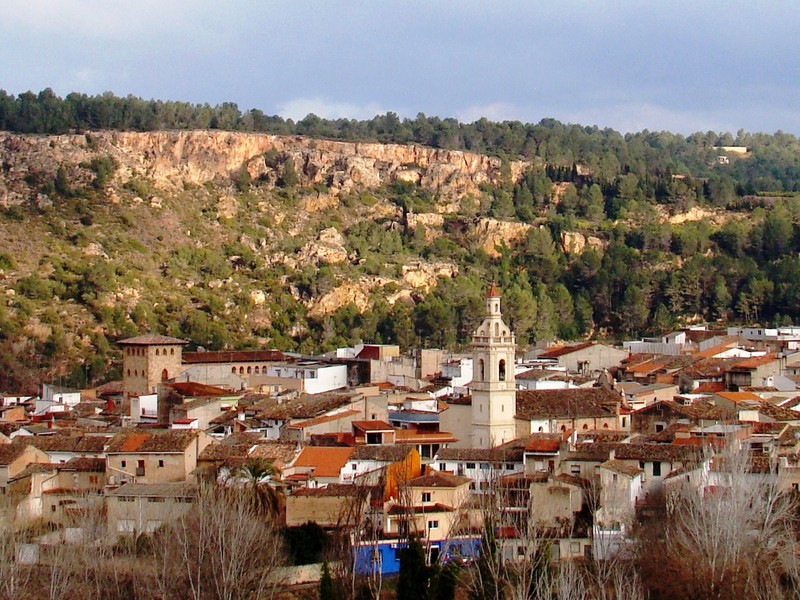Pico Caroche (Bicorp)
The Caroche or Caroig peak is a mountain of 1,126 meters, located in Teresa de Cofrentes, Spain. It is situated
The imposing structure of the parish church of Chella, located in the lower part of the town but visible from across the entire plain, stands in Plaza de la Iglesia square and is devoted to the Virgen de Gracia, the patron saint of the town. The Moorish town had a mosque, that was converted into the Iglesia Vieja (Old Church) in the mid-16th century and its remains are located on the street of the same name. Having overcome the trauma of the War of the Spanish Succession (1702-1714) the construction of the new church on the current site began in 1718. However, when work was at an advanced stage, it was ruined as a result of the catastrophic Montesa earthquake (1748), which made it necessary to delay rebuilding it until the years 1768-1789.
This resulted in the construction of a church where the late-baroque style gives way to simple and neoclassical lines, strengthened by the colour contrast of the inside walls in white, with mouldings and gilded capitals. The building has a Latin cross plan, with a dome over pendentives covering the transept. On the outside, the dome takes the form of an elegant half-orange, redesigned in the 19th century with blue and white glazed tiles. Side chapels open up in the central nave between buttresses. The chapels are separated by smooth and compound pilasters, whose lines are projected onto the half-barrel vault to divide it into different sections. The pictorial décor is concentrated on the four evangelists of the pendentives and in the segments in the interior of the dome with frescoes.
The neo-baroque main altar, overlooked by the Virgin is also noteworthy. The exterior combines original baroque-style features, such as the curvilinear crown of the façade, with neo-Gothic elements (pointed niche and oculus) and cladding or plaster that simulates large ashlar stones. These new additions, the product of architectural remodelling at the end of the 19th century, were completed with the construction of a sturdy bell tower, at the end of the church.
Chella’s magnificent bell tower, completed in 1898, offers a surviving example of the model of a baroque Valencian bell tower: a square prism, with a body of four openings for bells and crowned with a step pyramid at the top and adorned with pinnacles. However, it has a formally refined style which reveals it to be a more recent work. Its walls are made from stonework reinforced at the corners and mouldings in limestone. The four corners are facing the four points of the compass, and the bell tower contains four bells: the largest, devoted in 1972 to the Cristo del Refugio (Christ of Refuge); that of the Virgen de Gracia, from 1789; that of San Vicente and that of San Blas, from 1941.
The Caroche or Caroig peak is a mountain of 1,126 meters, located in Teresa de Cofrentes, Spain. It is situated
You will love La Canal de Navarrés! It’s an ideal destination for the whole family, to discover with friends, and

Estubeny, located in the interior of the province of Valencia, is an inland destination that hides a unique natural space,

Anna is a beautiful municipality in the Canal de Navarrés, well known for its Anna Lake, a lagoon surrounded by
Copyright © 2023. La Canal de Navarrés. All rights reserved.
Do not hesitate to contact us for any further information.
This website uses cookies so that we can provide you with the best user experience possible. Cookie information is stored in your browser and performs functions such as recognising you when you return to our website and helping our team to understand which sections of the website you find most interesting and useful.
Strictly Necessary Cookie should be enabled at all times so that we can save your preferences for cookie settings.
If you disable this cookie, we will not be able to save your preferences. This means that every time you visit this website you will need to enable or disable cookies again.